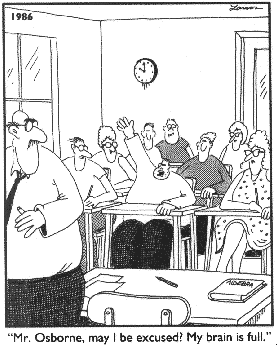Class Discussion of Cosmos: Possible Worlds, "The Cosmic Connectome"
••••••
Assignments for "The Cosmic Connectome"
As usual,
• Watch the episode; jot down your comments and notes about things that interest you or that you want to understand better. Try to have your questions in by the end of the day Saturday, but late questions are better than none.
• Formulate your questions and comments and post them at the bottom of this or any page at Discuss "Cosmos: Possible Worlds".
••••••
Questions From Students
Your questions appear here, along with some added resources, in some cases.
• Is self-organization an example of "emergence"?
Emergence at Wikipedia
• Could we discuss a question posed by Neil deGrasse Tyson: “Which assumptions of our own age will be considered as reprehensible by the next?”
• The only question I can think of is how did I come to have two gran mal seizures about 20 years ago. And I do know how EEG's work as after the first seizure I had several of those tests. It would have been even more interesting if the EEGs had been on someone else! No reason was ever found for them.
• What I thought of when watching the episode:
••••••
To Think About
• You have heard of the genome. What about proteome? Connectome? What are all these -omes? Hint: look up chromosome, and the meaning of the combining form -some. Could these -omes be better named?
• What is false pattern recognition? Think of some examples.
• To what extent should we judge luminaries of past eras for what appear, in today's light, to be moral failings like racism and sexism?
• What does it say about human nature that flawed individuals can nevertheless make such beneficial contributions? (Do you know any unflawed individuals?)
••••••
Miscellaneous Resources
• The Machine That Tried to Scan the Brain -- in 1882, at NPR
• Magnetic Resonance Imaging, at Wikipedia
• Functional Magnetic Resonance Imaging, at Wikipedia
• How Scientists Know About Molecules
• Zooming in on the molecules that make up cells
• Mechanisms of nerve action (pretty technical)
1) Nerve impulse
2) The synapse
• Protein Music
In addition to listening to the sounds, look at how complicated are the motions that lead this protein model from a disorganized chain to a precisely folded one. Also notice that the final, folded, functional form is still fluctuating wildly, as are all things on this level of size at room temperature. How can life be so coherent while dealing with the dramatic motion characteristic of molecules at ordinary temperatures?
Molecular events are unimaginably fast. The model in this video is moving faster than we can see, but it's slowed down from 160 nanoseconds to 270 seconds to make the movements and sounds distinguishable (barely). The real process is 125 million times faster than what we are seeing. Molecular events are unimaginably fast.
Is there an echo in here?
A little bit more about how Protein Music is generated:
•
